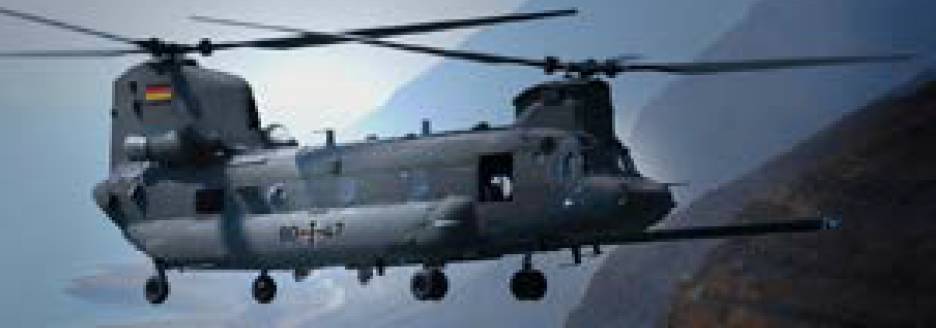Radome
Intelligence / Analysis / Comment
On 13 April, Ukrainian government officials claimed that their forces had attacked, and set on fire, the Russian Black Sea Fleet flagship, the Moskva, with two land-based RK-360 Neptune anti-ship missiles.
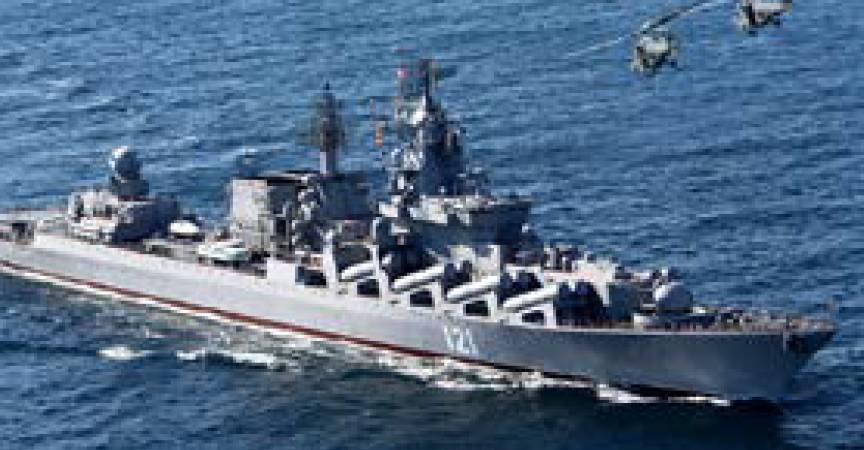 Russian MoD
Russian MoD
Moscow initially denied the claim of hostile action, only to report that a fire on board was being dealt with and that 512 crew had been taken off the vessel.
However, on 14 April, Russian media confirmed that the Slava-class cruiser had sunk under tow back to Sevastopol, Crimea. A Russian state media video released on 16 April of a parade of the crew in Sevastopol showed that approximately half the crew appeared to have survived – although the exact date of filming could not be verified.
Meanwhile, US officials confirmed that the sinking, south of Odessa, was the result of Neptune missiles which entered service with Ukraine in 2021. The sinking of the 12,490t cruiser is the largest surface warship to be lost to enemy action since WW2.
In apparent retaliation for the loss, Russian forces launched missile strikes on the Vizar factory, near Kyiv, that produces the Neptune and also used Tu-22M3 strategic bombers to strike the besieged Ukrainian city Mariupol on the Black Sea coast.
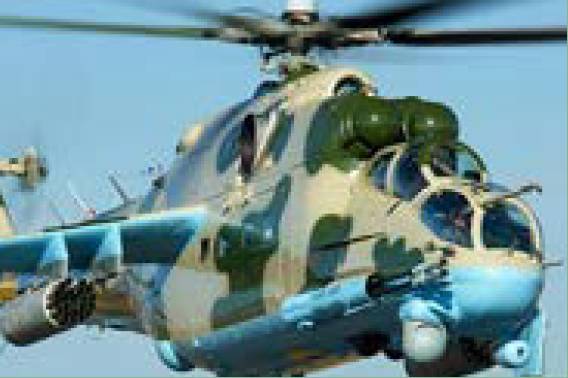 Bennorey/Wikipedia
Bennorey/Wikipedia
On the early morning of 1 April, two Ukrainian Mi-24 attack helicopters are understood to have carried out a raid to destroy an oil depot 40km inside Russia.
Social media footage showed the depot in Belgorod being attacked by unidentified Mi-24s with unguided rockets, before escaping at low level.
The Ukrainian MoD declined to confirm the helicopters in this cross-border raid belonged to them, except to say that it was “conducting a defensive operation and could not be held responsible for every catastrophe on Russia’s territory.”
As AEROSPACE goes to press in mid-April, the current verified losses through social media photos or video of wreckage for Russia are: 20 aircraft, 33 helicopters, 32 UAVs.
For Ukraine it is: 15 aircraft, 3 helicopters, 14 UAVs.
Notable losses include the first loss of a Russian 4+ generation Su-35S multirole fighter near Kharkiv on 7 April and a shootdown of a Russian Mi-28 Havoc attack helicopter on 1 April reportedly by a UK-supplied Starstreak missile.
The war has also seen the first use of Russian hypersonic weapons, with MiG-31Ks launching Mach 10 Kinzhal missiles against a Ukrainian arms storage bunker on 18 March and a fuel depot on 20 March.
Investigators combing the wreckage of the China Eastern Airlines Boeing 737-800, that crashed on 21 March with 122 people on board, have found both of the aircraft’s ‘black boxes’ – the cockpit voice and data recorders. Additionally, the authorities have said that there was no abnormal weather in the vicinity during the crash which saw the aircraft plunge from cruising altitude before impacting mountains in Guangxi, leaving no survivors. The aircraft was on a domestic flight from Kunming to Guangzhou when it lost contact with air traffic control around an hour after take-off before the aircraft descended 8,000m (26,000ft) in three minutes. China Eastern and its subsidiaries has now grounded all 223 of its Boeing 737-800 fleet.
Airbus has announced it has completed wind tunnel testing of its eXtra Performance Wing demonstrator, which will use a Cessna Citation VII bizjet mated with an active semi-aeroelastic wing. The wind tunnel testing took place at Airbus’ low-speed facility at Filton, Bristol. First revealed in September 2021, the ‘X-Wing’ prototype will fly in the middle of this decade.
Meanwhile, the UK’s Aerospace Technology Institute (ATI) has reopened applications for support for low-emission aerospace R&D with a £685m boost in funding over the next three years. The news reverses last year’s pause on new R&D projects and is a 50% increase on the previous three years.
US hypersonic start-up Hermeus, which aims to develop a Mach 5 passenger aircraft for civil and military missions, has announced $100m in funding to complete and fly its first subscale prototype. It aims to fly its first unpiloted Quarterhorse hypersonic demonstrator in 2023, with the goal of a fleet of three flight test vehicles. It then plans a follow-on vehicle, the Darkhorse, before moving on to a passenger aircraft, the Halcyon.
The company says that while the Quarterhorse will be capable of high-speed ‘sprints’ with the Chimera turbine-based combined cycle (TBCC) engine, Darkhorse will test sustained hypersonic flight.
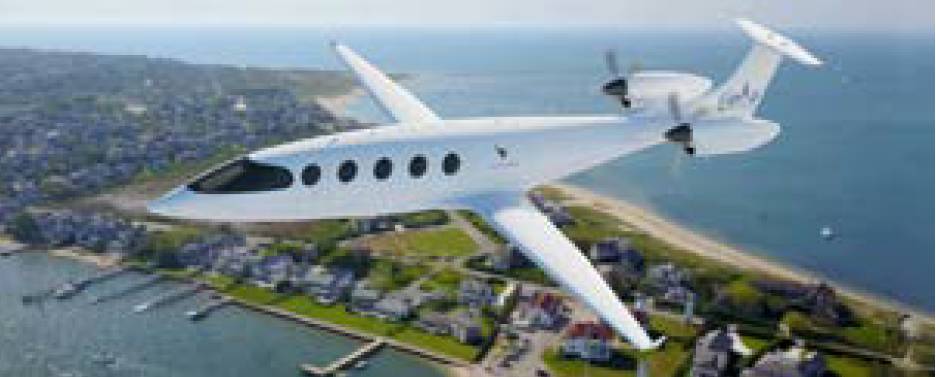 Eviation
Eviation
US commuter airline Cape Air is to acquire 75 all-electric nine-seat Eviation Alice aircraft.
A Letter of Intent for 75 by Cape Air was announced by Eviation but no delivery dates were given.
Eviation is currently ground-testing the Alice which boasts a range of 440nm and a maximum cruise speed of 250kt.
Russia’s Federal Air Transport Agency (Rosaviatsiya) is reported to have been the subject of a cyber-attack on 26 February which erased 65 terabytes of data, including documents, files, aircraft registration data and emails. Rosaviatsiya has attributed the problem to a temporary lack of access to internet and a malfunction of the electronic document flow system and is resorting to a paper version and information exchange using AFTN channels and postal mail.
- Meanwhile, the European Commission has blacklisted 21 Russian airlines for continued operations after their leased airliner registrations were revoked by Bermuda and Irish aviation regulators.
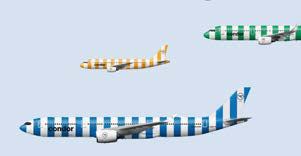 Condor
Condor
German leisure carrier Condor has unveiled its new striped livery which it says has been inspired by “parasols, bath towels and beach chairs”.
The livery will be rolled out on its fleet of Airbus A320, A321 and Boeing 757 aircraft, with the goal of 80% to be repainted by 2024.
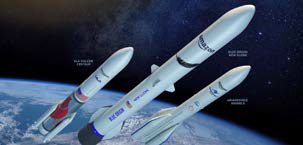 Business Wire/Amazon
Business Wire/Amazon
In the largest commercial space launch deal ever, Amazon is purchasing up to 83 launches from Arianespace, Blue Origin and United Launch Alliance to deploy most of its 3,236-satellite Project Kuiper broadband mega-constellation.
In contracts worth several billion dollars, Amazon announced on 5 April the agreements to launch an unspecified number of satellites on Ariane 6, New Glenn and Vulcan Centaur rockets over five years. The launches are in addition to nine Atlas 5 launches it purchased from ULA a year ago.
 NASA
NASA
NASA’s Mars helicopter, Ingenuity, has been awarded the most prestigious prize in US aeronautics, the Collier Trophy.
Previous winners of the annual award have included Orville Wright, Chuck Yeager and The Apollo 8, 11 and 15 crews.
Ingenuity, which weighs less than 4lbs, was only originally designed to make five flights but has now completed 25 flights on the Red Planet.
 Bombardier
Bombardier
Bombardier has delivered the last-ever production LearJet bizjet after announcing it would cease production to focus on larger Challenger and Global types. The last aircraft, a LearJet 75, was handed over on 28 March to Northern Jet Management at Bombardier’s Wichita, Kansas plant. The delivery marks the end of 60 years of Learjet production.
Canada’s De Havilland Aircraft has announced it is to relaunch the classic CL-215/415 twin-turboprop waterbomber into production this year as a new generation model. The DHC-515 Firefighter will feature new upgrades and has already secured 22 LoIs from prospective customers in Europe. Able to drop 700,000 litres of water per day, the DHC-515, which will be assembled in Calgary, Alberta, also features flexible capabilities for other missions, such as insect/oil spill spraying, an enlarged cargo door and the ability to add a quick-change sensor or medevac suite. First deliveries to customers will take place by the middle of the decade.
